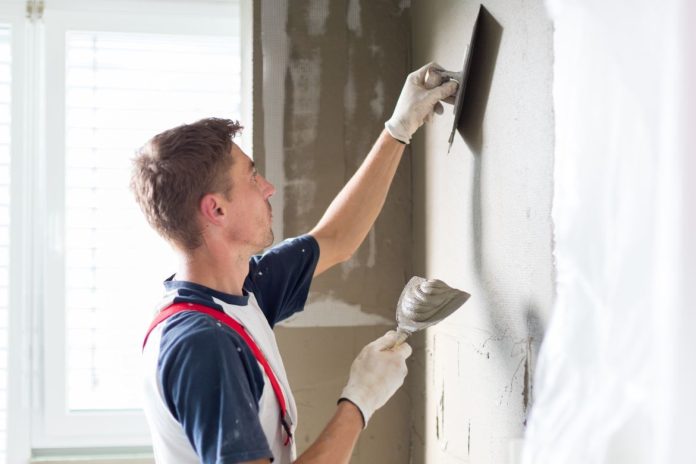This article discusses the common mistakes people make when working with plaster and stucco. Both plastering and stucco have various uses in and outside the home, but making wrong choices during the application process can result in significant issues. The first mistake people make is improperly removing old plaster, which can collapse the wall. Another common mistake is purchasing the wrong type of material, which can lead to damage and additional expenses. Painting over stucco cracks and painting stucco before it has fully cured are two other mistakes people frequently make. Homeowners can save themselves from unnecessary costs and damage by avoiding these mistakes and seeking advice from a professional plasterer or a reputable construction firm.
Removing Old Plaster
The initial step in many plastering projects involves removing old plaster. However, it’s crucial to avoid improper removal, which can damage the underlying structure and possibly even causing a collapse.
Old plaster has a strong bond with the surface underneath it, and if it was applied over brick, for example, removing it may result in chunks of brick being ripped out as well. To prevent this, it’s best to begin with a small wall area, preferably near a corner, using a chisel and rubber mallet. This will reveal the surface underneath and show how easy or difficult the plaster is to remove.
Once you know what you’re dealing with, you can proceed with caution. If the underlying material appears in good shape, you can use the chisel approach for the entire wall, although it may take some time. This is still a much better alternative than replacing a collapsed wall.
If the wall starts to crumble as you remove the plaster or are unsure how to proceed, it’s best to consult a professional. They can provide valuable insights and even offer a small fee consultation. If they suggest their own contracting company, it’s up to you to decide whether or not to hire them. Always exercise common sense and be honest about what you can handle.
You can prevent one of the most common plastering mistakes by starting slowly and avoiding the temptation to use a giant mallet in the middle of the wall.
Selecting the Wrong Material Type
It’s crucial to remember that various plaster and stucco mixtures are designed for different purposes. Some plaster mixtures are specifically intended for outdoor use, while certain stucco types are suitable only for indoor applications.
Exercise good judgment if you’re planning a DIY plaster or stucco project. Although purchasing the incorrect material is uncommon, it still happens quite frequently. This is typically caused by rushing and not paying close attention to the packaging. If you’re unsure which mixtures are appropriate for which applications, seek advice from a professional or knowledgeable home centre employee. This easy step can save you the trouble of returning to the store and protect you from the cost and harm of utilizing the wrong mixture.
When selecting a mixture, there are some crucial factors to consider. Where will the plaster or stucco be placed? Are you aiming for a decorative or practical finish? Will the stucco or plaster be applied in an area with excessive moisture or over a stone wall? These aspects play a vital role in determining the appropriate mixture and will assist you in selecting the proper material.
Painting Over Cracks
Painting a stucco wall may seem like an easy task, but there are potential mistakes that can lead to significant damage. To avoid these mistakes, it’s essential to take proper precautions.
One common mistake is painting over stucco cracks. You should not ignore even small cracks, because sealing them can trap moisture inside, degrade the stucco over time, causing larger cracks, mould, and mildew growth. Ignoring the problem can allow it to spread and potentially affect an entire portion of your home.
To properly fix stucco cracks, use the appropriate materials. It’s important not to use whatever materials you have on hand, such as leftover plaster or caulk intended for sealing windows, as this can compromise the integrity of your home. An elastomeric compound is usually the best option for small to medium cracks. You can find these compounds at any home improvement store, and an employee can assist you in choosing the right brand and formulation.









